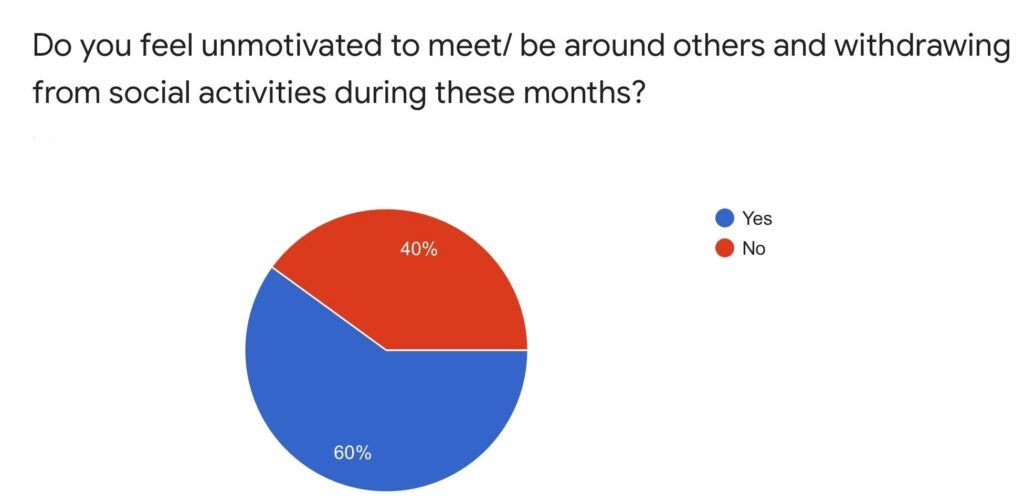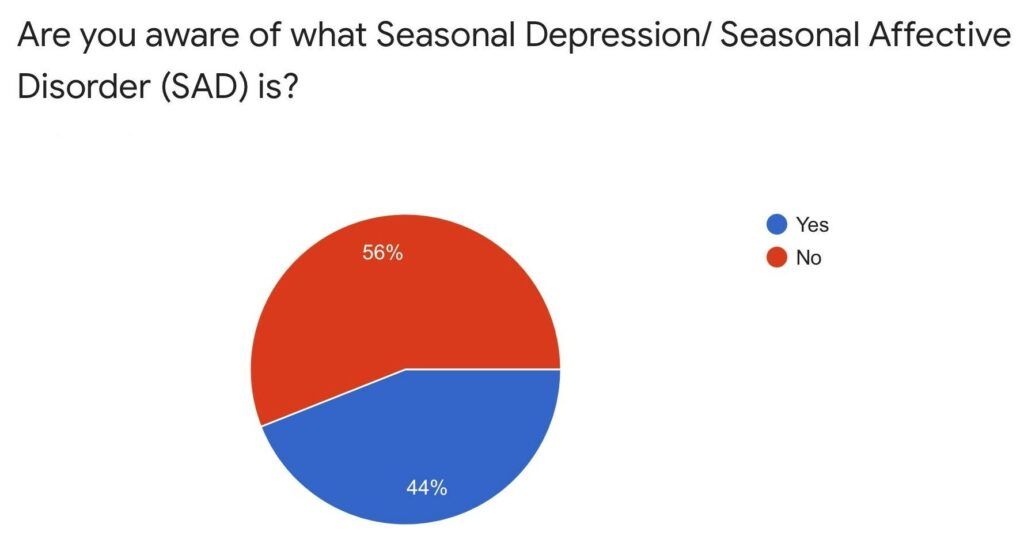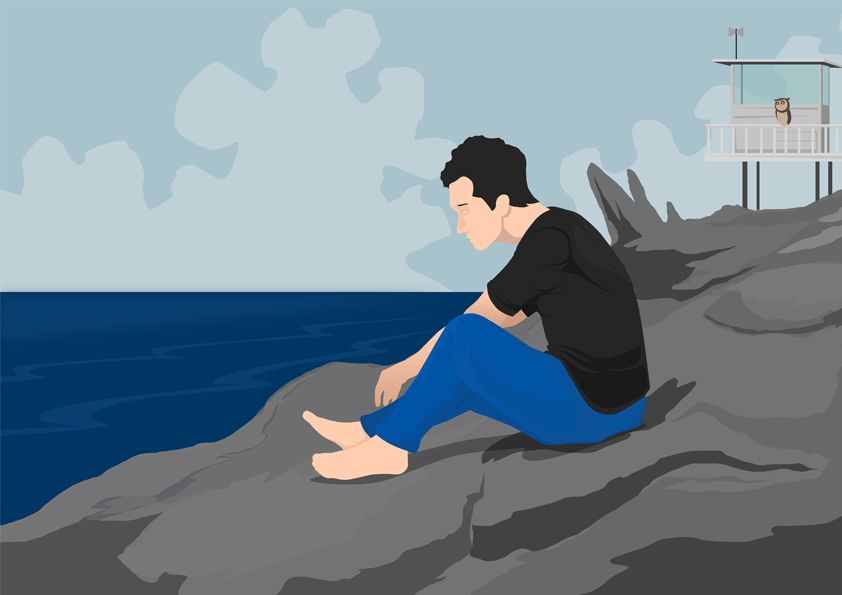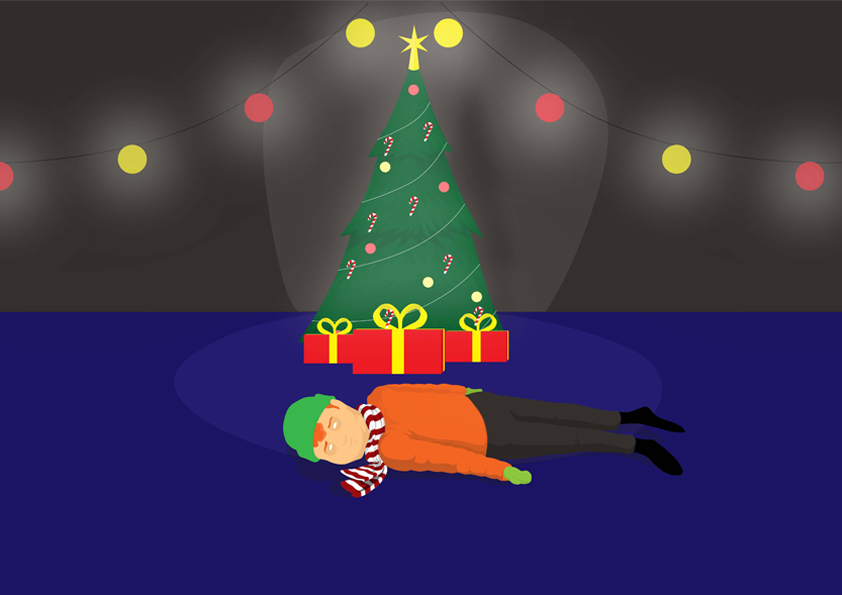On a grey and chilly Shillong December evening, Reece, cold and impatient, made five calls to five different friends in the space of a couple or so minutes.
“It’s too cold to come out today, Reese,” her best friend from college answered. “I already told you, the weather doesn’t make me feel like it.”
After an exasperated sigh, she made the second call to Mac, her teller of all things gossipy and interesting, “Ree, I’m not feeling my 100% today. Raincheck?”
“Third time’s the charm,” Reece let out a frustrated sigh before dialing another close friend’s number.
After the fourth ring, her friend answered, “I haven’t been feeling that great because of the weather. I know a hot cup of coffee will make me feel better but I’d rather lay in bed today.”
Reece, nineteen, caffeine-addicted, and on a semester break, stopped frequenting the local diner after that day when everyone she called declined her offer of free coffee and tea, the latter a pop culture synonym for gossip.
Almost a month later when Reece showed up, her regular waiter stated matter-of-factly, “you dropped off the face of the earth”.
“I’ve been seasonally depressed,” she answered with a heavy laugh. “I think my friends caught the winter-depression bug and so did I. This weather makes everything sad; there’s no sun, no motivation to do anything and it makes me feel not-so-guilty about just being in bed all day.”
“The sun came out today,” she continued, “so I felt better and decided to come here.”
In this part of the country, especially, the onset of the winter season brings to the forefront unbearable cold, sunsets that are an hour-too-early, and the pressures of sometimes-forced and awkward interactions with relatives and acquaintances, buying the right presents, and angst of being uninvited to parties and get-togethers. This cold weather not only affects the physical body, but also to the mental state of some people. 0.5-3% of people in the entire population suffer from Seasonal Depression or Seasonal Affective Disorder (SAD); that’s 40 -240 million out of the world’s total 8 million.
When you look at it, it’s a lot; but when you look around you, would you notice anyone suffering from seasonal depression?
Reece’s regular waiter didn’t.
Well, In the winters, someone you know might. They might be withdrawing from activities and social arrangements. They might be unexpectedly lethargic and lazy.
Rio, a 23-year-old Shillongite stated, “The sense of detachment grows a lot stronger during the winter season when I am given more time to spend for myself. I have a hard time pushing myself to spend time with my friends and family.”
Jackie, a young adult who usually feels down during the winter months, experiences one significant change in her mental health confessing that she generally stops communicating with people, and experiences a loss of interest to be out and about, which does not mimic her usual social-butterfly self.

Seasonal Affective Disorder or SAD is a type of depression that some people experience in certain periods of the year, usually during the fall and winter seasons. To some people SAD is “just the winter blues”, but SAD can be a very serious mental health concern that people should be aware of and seek help for.
Dr. Jasmine Lyngdoh, who has been practising for more than 20 years observed that Seasonal Depression is often confused with general depression, “People are not aware of the classifications of disorders and presume these are same.” She also stated that her patients ranging from ages 26-30, come to her without knowing they have SAD and are unaware of what SAD is.
72% of people who experience seasonal depression do not know the cause of their slump during the winter months. The specific cause of seasonal depression remains unknown, though some factors come into play including:
(i) One’s biological clock where the reduced level of sunlight in fall and winter months may cause winter-onset SAD
(ii) Reduced sunlight can cause a drop in serotonin levels that may trigger depression and
(iii) The change in season can disrupt the balance of the body’s level of melatonin, which plays a role in sleep patterns and mood.
The changes brought about in the winter season are strenuous to adjust to. The days are shorter and there is an undersupply of time and sunlight which not only discourages activities but also increases isolation.
Rio voiced his experience on the change in his mental health during the winter months. “Everything seems to have a lot less color. The cold magnifies the feeling of loneliness. I want to sleep in more during the day, and stay up longer at night. I want to do as few things as possible. My appetite is worse than it already is. I constantly feel tired and down. I get overwhelmed easier and my patience runs a little thinner.”
Eurydice, a 21-year old student also conveyed her experience in the change in her mental health due to the changes in the weather stating, “the days are shorter, it gives me a lot of anxiety because it feels like there is not enough time in the day to complete my tasks.”
SADly, seasonal depression does not occur only at the onset of the colder and gloomier days. It carries on throughout the winter months and increases correspondingly, only for it to whiter away when spring and summer seasons border on.

DP, a 23-year old young adult who naps longer and would rather stay in during the winter months expressed similar views, “I get gloomy, inactive, and unproductive. Gradually, as the winter months progress, it gets worse”
According to Dr. Lyngdoh, the connection between the cold season and SAD is, “seasonal lifestyle changes & cognitive despair resulting in distress & biological stress responses”
Kay, a 21-year old woman who seeks regular counselling expressed that she does feel down during the winter months and this is due to a change in the weather specifically due to “gloomy and cold weather”.
Promie, a working young adult is aware of SAD and why the change in season is causing her to feel, ‘mostly fatigue, disinterest in work, the want for warmth/sunshine, lesser food intake’. She is convincing. “I am aware of seasonal depression and metabolic depression causing a state of low. Though scientifically, it can be rationalised, there is no set pattern or parameters of seasonal depression and each year it can be different especially when aggravated by changing surrounding circumstances.”
However, Seasonal Depression is not limited to the winter season. 10% of individuals from the 100% who experience SAD encounter it in the summer season. For them, the onset of the summer season triggers their Seasonal Depression symptoms. Dr. Ian A. Cook, the director of the Depression Research Program at UCLA, notes that in the countries and areas closer to the equator (Mainland India), summer SAD is more prevalent than winter SAD.
Amy, a woman who feels happier in the winter months stated that for her, it is the opposite, “I have depression during summer months”
Similar to winter SAD, summertime SAD is also caused due to the change in weather and time. The increase of heat, humidity and longer days play a role in the causes of summer SAD.
The most customary tip for helping with Seasonal depression is to seek help and therapy. Dr. Cook advises individuals experiencing SAD to not be so hard on themselves or compare themselves to people who they feel out of step from, “So much of our misery grows out of the gap between where we are and where we think we ought to be”. Exposure to sunlight provides a huge help when experiencing SAD.

Dr. Lyngdoh also explains when people should see a therapist, “Most normalise these transitions but therapy is great for cognitive and behaviour modifications”
Rio agrees with these views, “I think speaking to a practicing professional would help greatly. Learned professionals in this field have published countless books as well. These books could provide you with a different perspective on the phenomena – one of the observer, and not of the sufferer.”
Though seen as a constructive and perceptive solution to SAD, a scarce amount of people agree with this. Granted, therapy like most healthcare is not readily affordable to people, and awareness of the same is meagre.
Sakshi, a 23-year old working woman joked about the expensiveness of therapy and how there should be a discount for winter SAD, “Therapy should be affordable and accessible”
Though therapy is expensive, there are various counselling groups, NGOs and therapists willing to help people in need by providing free counselling. People experiencing SAD should know that they are not alone in this, that what they are experiencing is not permanent and that it shall pass.
Author’s note: Some names have been changed as per request from the survey respondents.
RoUTES Shillong is offering free counselling for individuals who may need someone to talk to.
Email: [email protected]
Ph. No: 09436175848
Affordable online therapy is also available at https://mindpeers.co/

